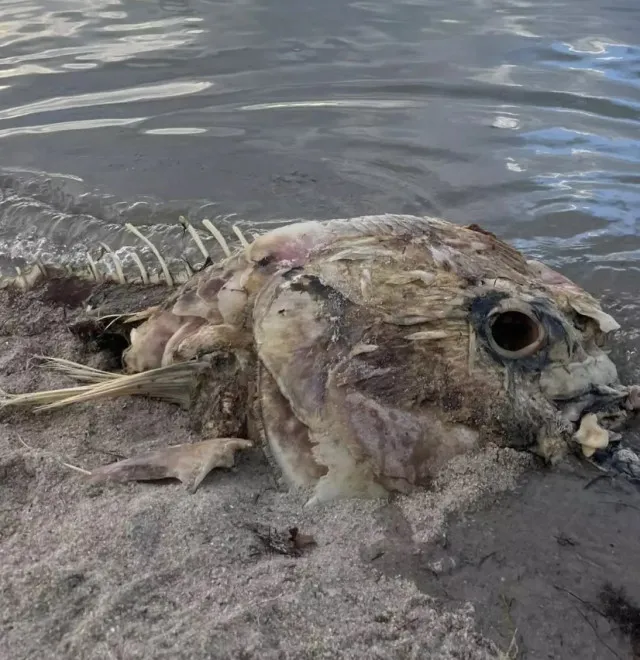A bizarre and decomposed sea creature has washed up on a beach in Australia, leaving locals and experts puzzled about its true identity.
Discovered by a dog walker, the creature’s advanced state of decay has made it difficult to determine what exactly it is.
A mysterious creature was discovered on a beach.

Jem, a 42-year-old dog walker, stumbled upon the strange remains while walking her dogs along the beach.
The creature was severely decomposed and featured visible remnants.
These included a head with eye sockets, a protruding spine, and what appeared to be part of a pectoral fin.
Despite these features, its exact nature remained elusive.
Jem noted the eerie appearance of the creature, remarking on the size of its eye sockets and the spooky impression it left.
Additionally, she speculated that recent wild storms in Victoria might have contributed to the creature’s appearance on the beach.

Many experts are baffled by the unique appearance of the mysterious sea creature
Marine biologist Lawrence Chlebeck from Humane Society International suggested that the remains are likely from a bony fish, or teleost.
This group includes around 26,000 species.
Additionally, Chlebeck considered tuna or grouper as possible candidates due to the creature’s large size.

In contrast, Sheridan Rabbitt from the Centre for Marine Science at the University of Queensland proposed that the remains could be from a puffer fish or globe fish.
However, the creature’s advanced decomposition complicates accurate identification.
The ocean is home to many strange and wonderful creatures, from large sharks to unusual species like the Phronima.
This parasite lives inside gelatinous plankton and inspired the Xenomorph in the ‘Alien’ movie franchise.
The mysterious creature found on the Australian beach adds another chapter to the ocean’s enigmatic lore.
The mystery surrounding the sea creature’s identity remains unresolved.

While theories abound, the advanced state of decomposition prevents a definitive identification.
This encounter serves as a reminder of the ocean’s vast and often unexplored biodiversity.